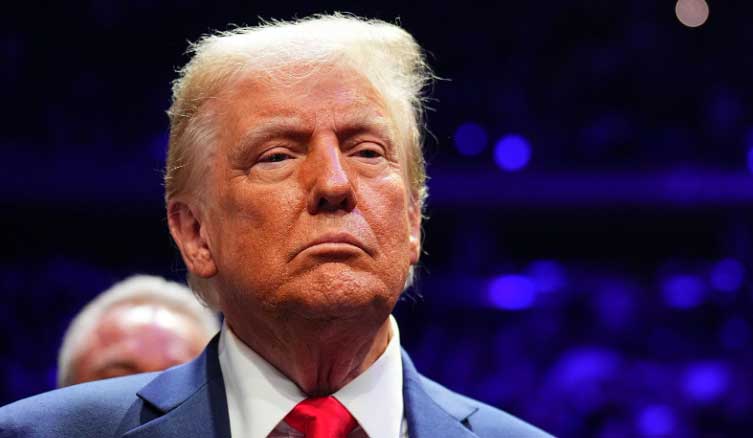Trump Vows Massive Tariffs on Mexico, Canada, and China Starting Day One
President-elect Donald Trump has pledged sweeping tariff increases on goods from Mexico, Canada, and China, promising dramatic changes to U.S. trade policy on his first day in office. Trump announced these measures via his Truth Social platform on Monday, framing the tariffs as retaliation for issues such as illegal immigration, drug trafficking, and what he describes as “open borders.”
The Proposed Tariffs
Trump’s plan includes:
- Mexico and Canada: A 25% tariff on all imports until illegal immigration and drug trafficking, particularly fentanyl, are addressed.
- China: A 10% increase on existing tariffs until China halts the flow of illegal drugs into the U.S.
“On January 20th, as one of my first Executive Orders, I will sign all necessary documents to charge Mexico and Canada a 25% tariff on ALL products coming into the United States,” Trump wrote. “This tariff will remain in effect until such time as drugs and illegal aliens stop this invasion of our country!”
Trump also criticized China for failing to take effective action against the flow of fentanyl, claiming prior promises to crack down on drug traffickers were not upheld.
Reactions from Affected Nations
China, Mexico, and Canada quickly responded:
- China: Embassy spokesperson Liu Pengyu rejected Trump’s claims, stating that China has cooperated with the U.S. on counter-narcotics efforts. Liu also warned that tariffs could harm both countries, emphasizing the mutual benefits of economic cooperation.
- Canada: Canadian officials highlighted their commitment to border security and emphasized the importance of their shared border for U.S. energy supply. Deputy Prime Minister Chrystia Freeland said Canada would continue discussions with the incoming administration.
- Mexico: While no immediate statement was issued, the Mexican peso dropped 2% against the U.S. dollar following Trump’s announcement.
Economic Implications of the Tariffs
The proposed tariffs could have widespread consequences for the U.S. economy:
- Supply Chain Disruptions: Key industries reliant on goods from neighboring countries and China could face significant cost increases.
- Consumer Impact: Higher tariffs effectively act as a tax on imported goods, raising prices for American consumers. Economists estimate the measures could cost the average U.S. household over $2,600 annually.
- Financial Markets: The announcement led to declines in stock futures and a drop in the value of the Canadian dollar and Mexican peso.
Karl Schamotta, a market strategist at Corpay, warned that the tariffs could add $272 billion annually to tax burdens, increase interest rates, and dampen consumer spending.
U.S. Imports at Risk
The United States relies heavily on imports from its closest trading partners:
- Canada: Supplies oil, vehicles, machinery, plastics, and wood.
- Mexico: Provides cars, car parts, electronics, machinery, and furniture.
- China: Major source of electronics, machinery, toys, furniture, and plastics.
Many of these imports have been exempt from tariffs under the U.S.-Mexico-Canada Agreement (USMCA), which replaced NAFTA during Trump’s first term. It is unclear how Trump’s proposed tariffs would align with the terms of the USMCA.
Historical Context and Challenges
During his first term, Trump imposed tariffs on $380 billion worth of goods, targeting products like steel, aluminum, washing machines, and solar panels. While these measures aimed to boost domestic manufacturing, they also triggered retaliatory tariffs, undermining their effectiveness.
Mainstream economists argue that tariffs are inflationary and detrimental to global trade. Trump, however, views them as a tool to stimulate domestic manufacturing and generate revenue for the U.S. Treasury.
Outlook for Trump’s Tariff Plan
Trump has hinted at even steeper tariffs in a second term, including an across-the-board 10%-20% tariff on all imports and up to 60% on Chinese goods. While Treasury Secretary-designate Scott Bessent supports tariffs if implemented gradually, the risk of retaliatory trade wars remains a concern.
If enacted, these policies could mark a significant shift in U.S. economic strategy, but their long-term impact on industries, consumers, and global relations is uncertain. The incoming administration will need to balance Trump’s aggressive trade agenda with the economic realities facing American households and businesses.
This article was rewritten by JournosNews.com based on verified reporting from trusted sources. The content has been independently reviewed, fact-checked, and edited for accuracy, neutrality, tone, and global readability in accordance with Google News and AdSense standards.
All opinions, quotes, or statements from contributors, experts, or sourced organizations do not necessarily reflect the views of JournosNews.com. JournosNews.com maintains full editorial independence from any external funders, sponsors, or organizations.
Stay informed with JournosNews.com — your trusted source for verified global reporting and in-depth analysis. Follow us on Google News, BlueSky, and X for real-time updates.














